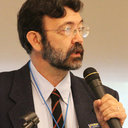Environmental Health Promotion of a Contaminated Site in Mexico.
Sleutelwoorden
Abstract
Entangled in complex ecological, sociocultural, and economic systems, current environmental health problems require integrated participatory approaches. Alpuyeca, a semi-urban, highly marginalized community in South-Central Mexico burdened by lead and polychlorinated biphenyl (PCB) contamination, dengue fever, and intestinal diseases, illustrates this. Its residents are distinctive, however, for their concerted actions in the face of environmental problems and the presence of defenders of a prehispanic worldview based on the protection of nature. This article addresses the health impacts of an integrated environmental health promotion strategy implemented through a participatory action research intervention based on qualitative and quantitative methods. Different actors, sectors, dimensions, and knowledge types were harmonized in a collaborative space created specifically for our interdisciplinary research team, community residents and local authorities. Reflections, plans and actions were developed collectively in this space with the view of finding solutions anchored in the local culture. Results included sharp reductions in blood-lead concentrations among children, in entomological indices, and in PCB contamination, as well as capacity strengthening. Medium-level community participation was achieved. This work contributes evidence that participatory environmental health research can be effective in analyzing and reducing problems in communities with multiple environmental health concerns. It complements ecohealth and environmental health literacy approaches.



